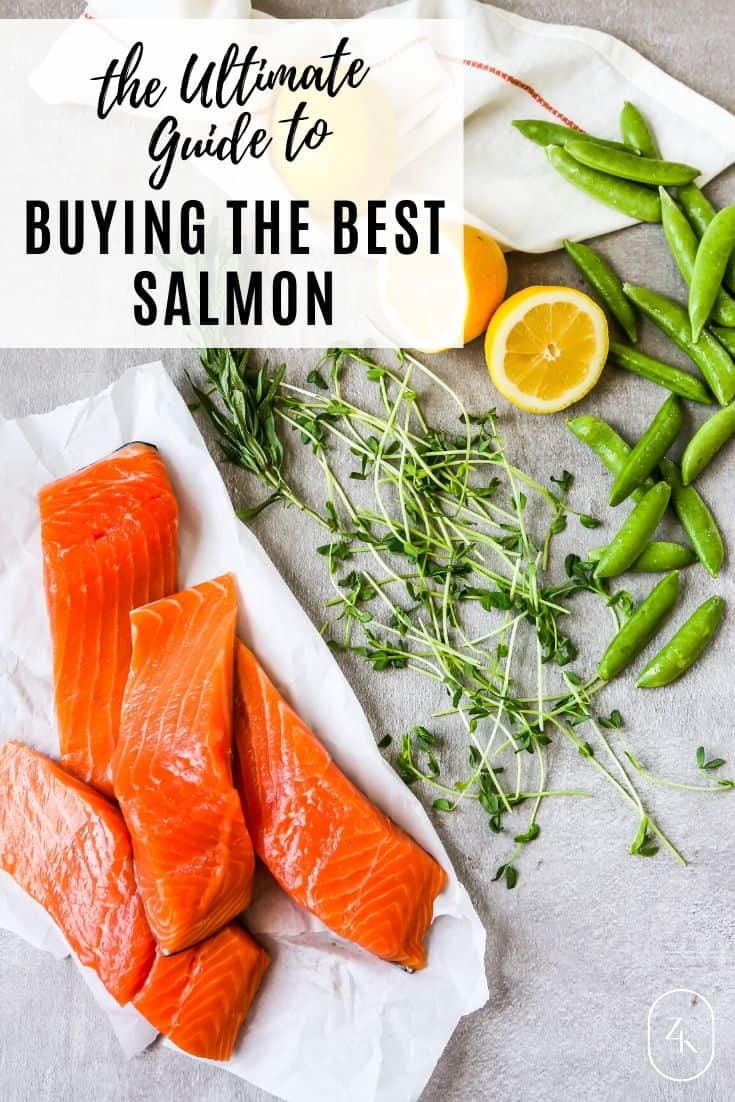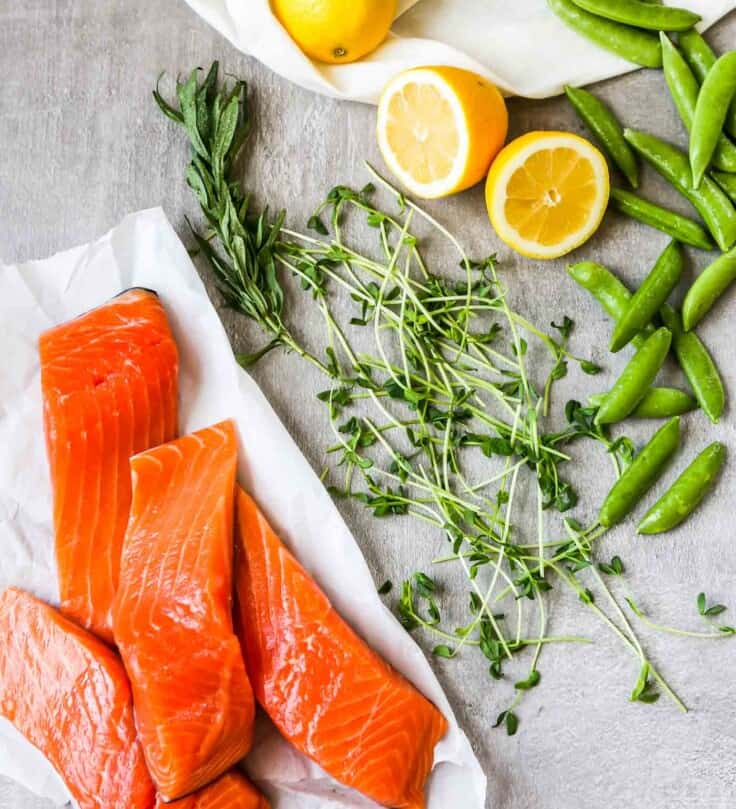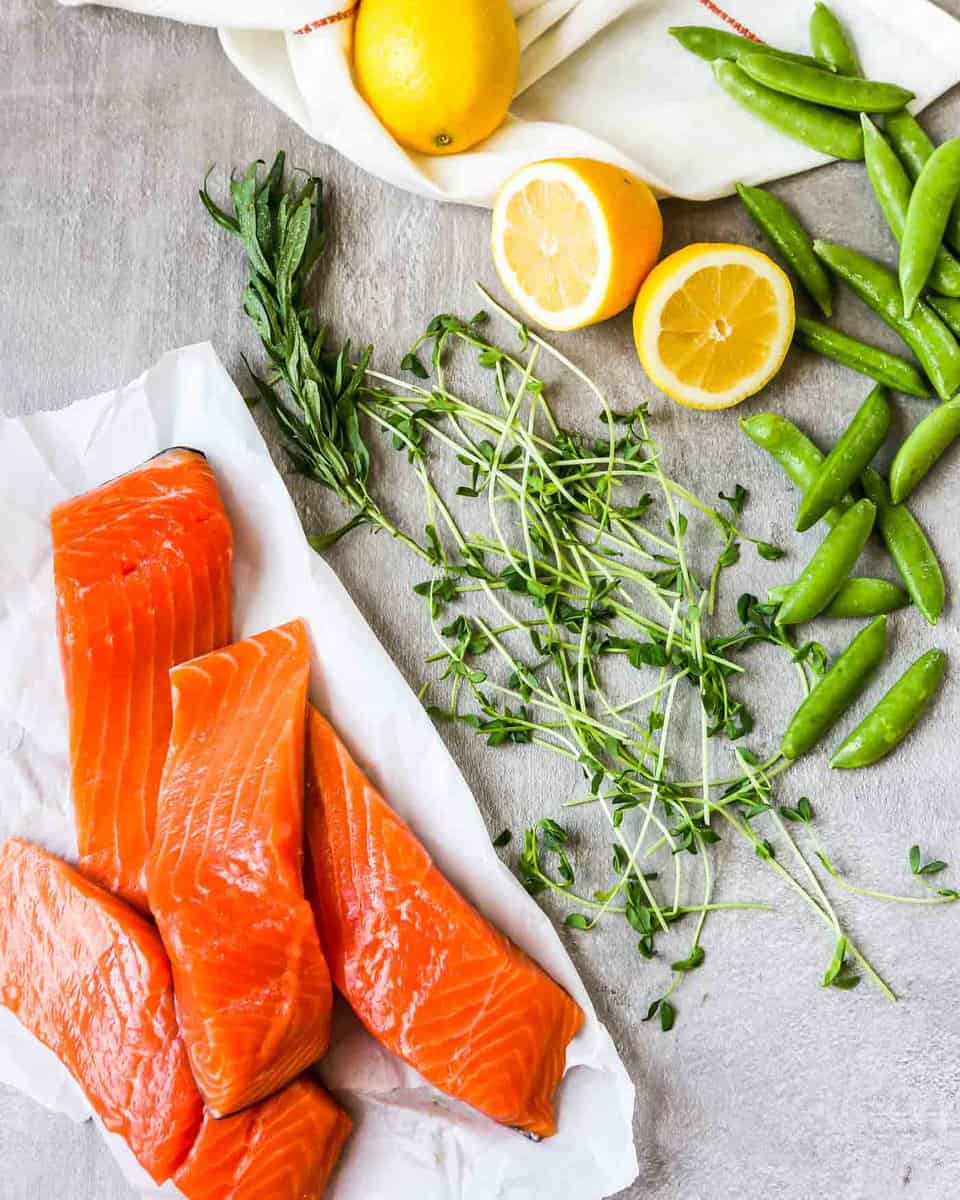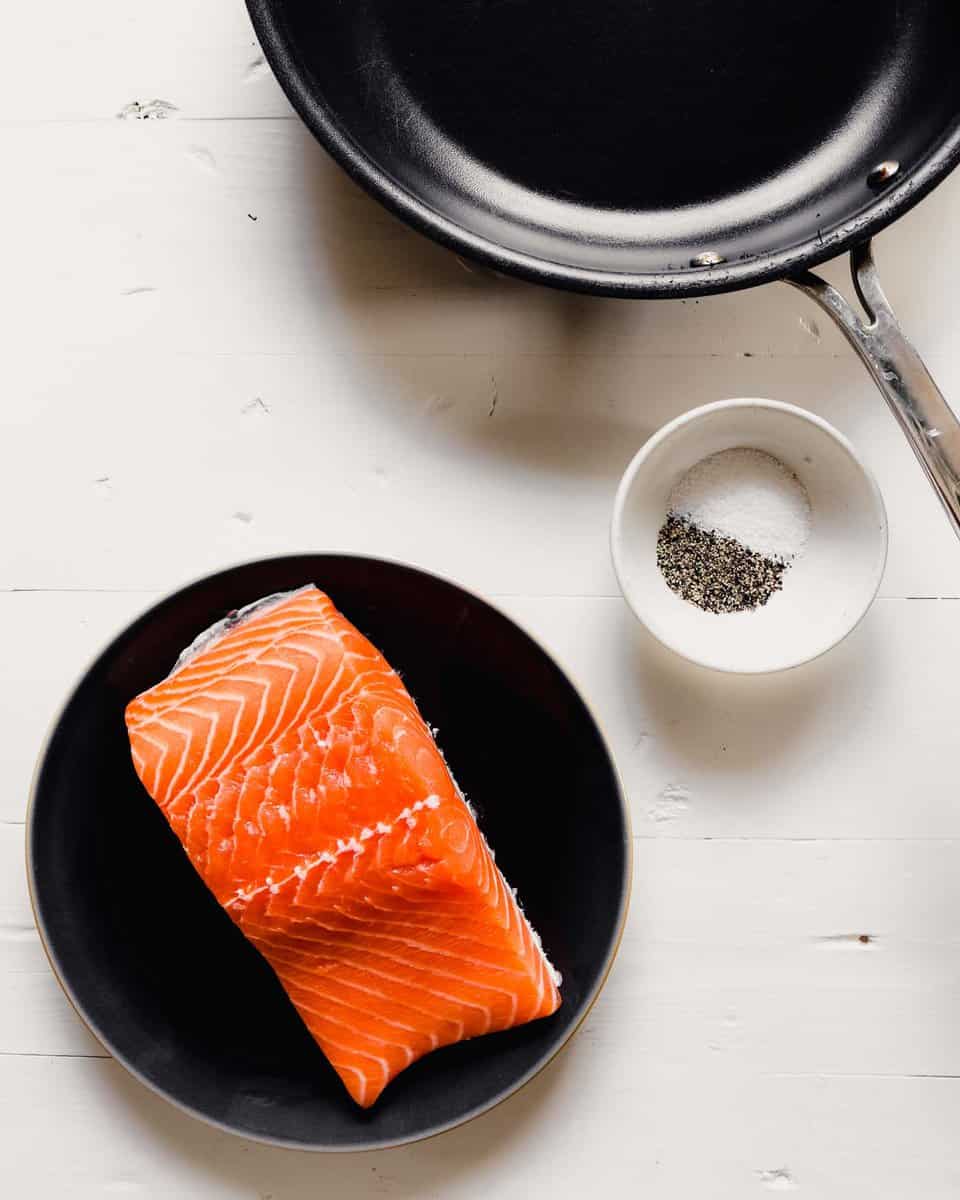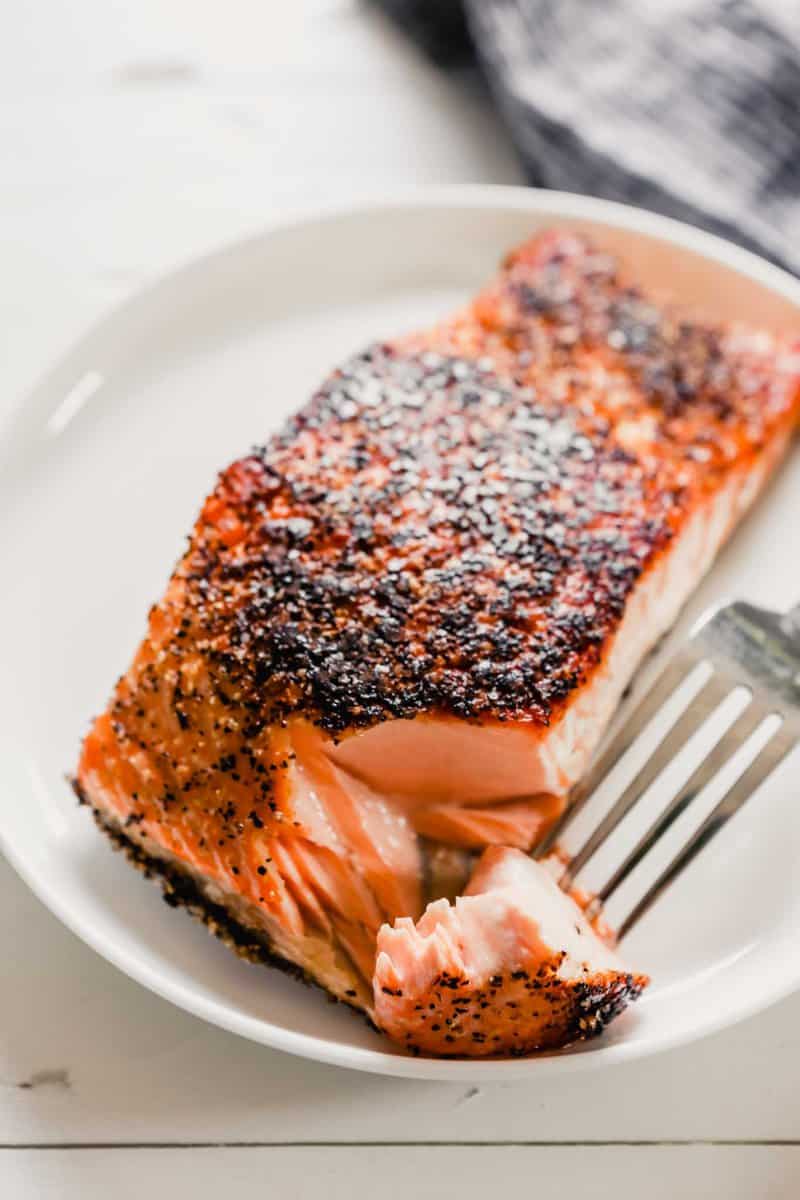Buying salmon should be easy. But between farm-raised, wild-caught, domestic, international, and fresh vs. frozen, the options can be overwhelming. Well guess no more! With these tips and tidbits of information, you will be able to make more informed, healthy and sustainable options so you can find the best salmon to buy.
 What to look for when buying salmon filets
What to look for when buying salmon filets
Appearance:
- Avoid salmon filets that have breaks or cracks in the muscle, both within the muscle itself and along the white collagen sheaths. This indicates mishandling and degradation.
- Avoid any packages that have pooling of water, another sure sign of degradation.
- Look for filets that are bright and saturated in color.
- Salmon filets should have a bright contrast between the muscle and the fat.
Texture:
- Choose filets that are glossy and firm to the touch.
- Avoid filets that are chalky, dry, sticky and soft to the touch.
Smell:
- Salmon filets should smell fresh and clean, and slightly briny or like the ocean. Fresh fish should never smell “fishy.”
Best place to buy salmon
The best place to buy salmon is from your local fishmonger/fish market. Not only will they have the freshest fish, but they will also have the best quality and be the most knowledgeable about the available products. Simply search “fish markets in my area” for a list of local markets near you.
Fresh vs. frozen
Don’t have a good fish market in your area? Frozen salmon can be just as good, and sometimes even better than what is offered behind the fish counter. If you opt for frozen salmon, look for one that has been vacuum sealed and is labeled as flash-frozen immediately after harvest.
In many cases, the salmon offered at the seafood counter in a grocery store or supermarket is often thawed salmon which has also been flash-frozen immediately after harvest. In my opinion, if these are your two options, why not choose the one that hasn’t already been thawed for a while?
 Best salmon to buy: wild-caught vs. farm-raised
Best salmon to buy: wild-caught vs. farm-raised
When choosing between wild-caught or farm-raised salmon, there’s really no correct answer. With pros and cons on both sides, it’s truly up to you to decide based on your preference.
Wild-caught, as you can imagine, defines fish that are caught in their natural habitat by fisherman. Farm-raised, on the other hand, defines fish that are raised in pens submerged in lakes, ponds and saltwater. (Most shrimp are grown this way as are many oysters and mussels.)
Studies done comparing nutritional and health benefits between the two are inconsistent. Some research shows that farm-raised salmon is higher in omega-3 fatty acids due to fortified feed. While other studies show that wild-caught are higher in fatty acids due to a diet of small fish, of which are high in omega-3 fatty acids due to the consumption of algae. There’s really no consensus on which is more nutritious.
Some argue that farm-raised salmon is more sustainable long term since many species are being overfished in their natural habitat. On the other hand, many people argue that the resources required to farm raise fish is just as draining and inefficient for the environment.
A notable argument against farm-raised fish is that it has a higher risk for contamination due to farming practices. However, it’s dually important to note the presence of industrial contamination in our streams and oceans which affect wild-caught fish and seafood.
The most important thing to keep in mind when purchasing salmon, and all seafood for that matter, is to know where it is coming from. Farm-raised or wild-caught fish from the US is trustworthy and reliable thanks to strict laws and regulations of handling and farming practices.
I recommend consumers to be cautious when buying fish that was raised or caught internationally. China, for example, does not treat fish waste properly, which leads to water contamination. Additionally, many countries outside of the US regularly use antibiotics and pesticides in farming practices, both of which are not allowed in the US.
 How long does raw salmon last?
How long does raw salmon last?
Raw salmon can be kept in the refrigerator for up to two days.
Raw salmon can be stored in the freezer for up to three months.
Vacuum-sealed salmon can be stored in the freezer for up to eight months.
How to store salmon
If you are planning to use fresh raw salmon within two days, here is how you should prepare and store it:
- Rinse salmon in cold water and pat dry.
- Warp salmon tightly in plastic wrap, then wrap with a layer of aluminum foil.
- Place salmon in the coldest part of your refrigerator, or in the bottom drawer.
- Make sure refrigerator maintains a temperature of about 32-degrees fahrenheit.
If you are planning to freeze raw salmon, here is how you should prepare and store it:
- Rinse salmon in cold water and pat dry.
- Wrap salmon tightly in plastic wrap, then wrap with a layer of aluminum foil.
- Place wrapped salmon in a resealable zipper-lock bag (I love my Stasher bags).
- Place in the coldest part of the freezer, or on the freezer floor.
 Try These Salmon Recipes!
Try These Salmon Recipes!
- Spinach & Lentil Salad with Salmon
- Seared Salmon with Leek Purée and Pilaf
- Lox Frittata
- Perfect Pan Seared Salmon
